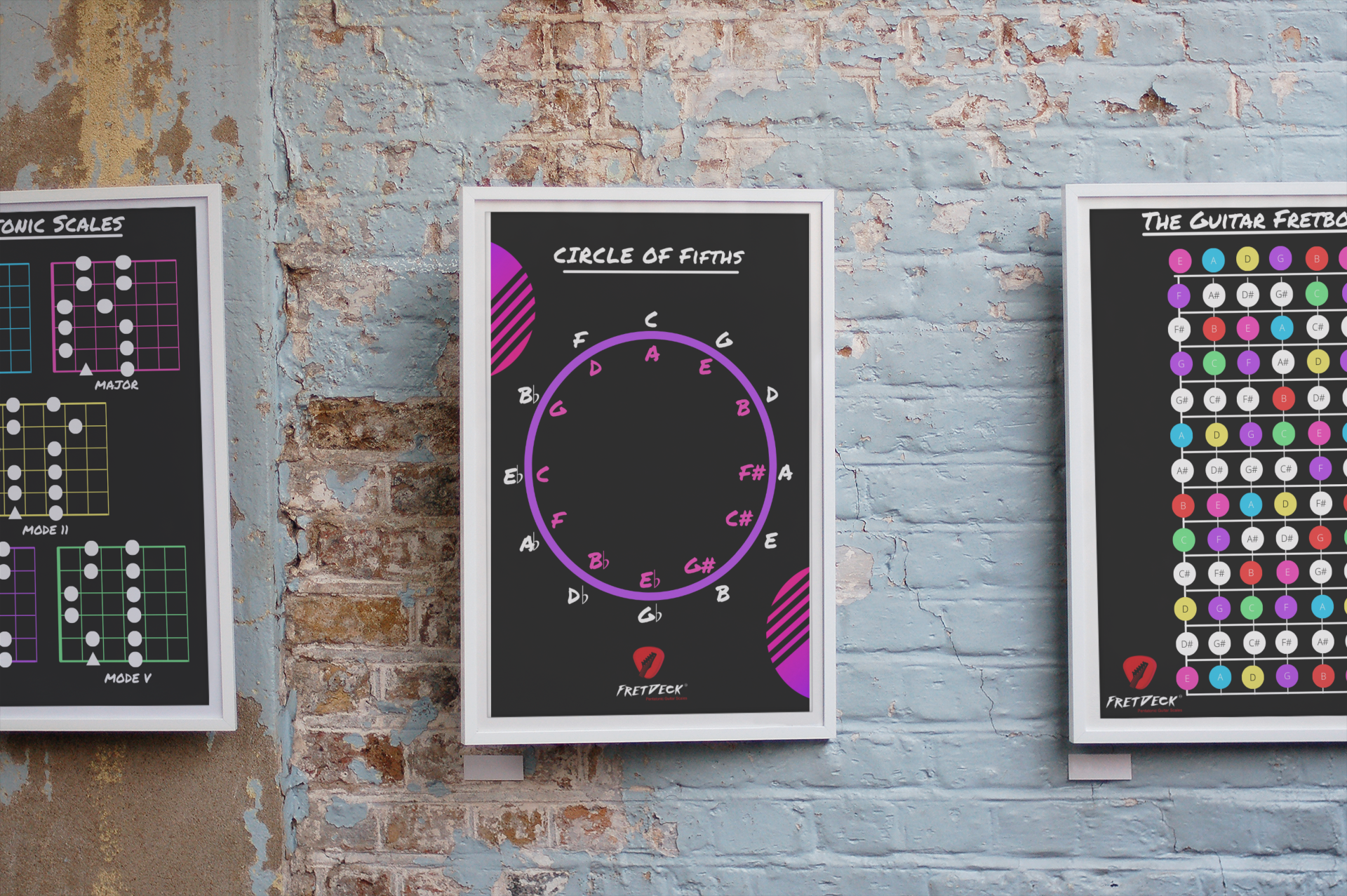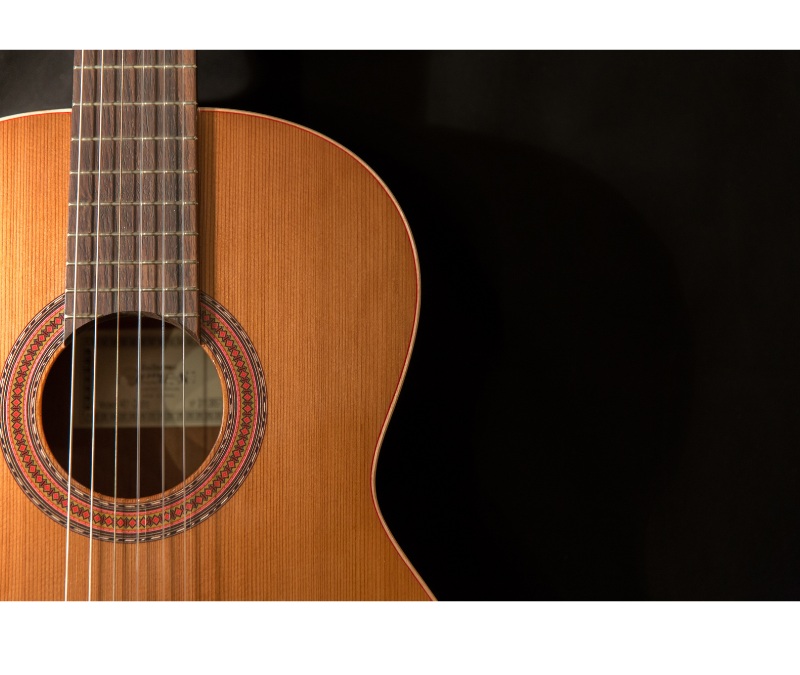Guitar chord progressions can be a daunting task, but once you get a grip on chord progressions, the world of music opens up to you like never before. Guitar chord progressions are the building blocks of many songs across various genres. Whether you’re into rock, blues, soul, or any other style, mastering these progressions will significantly enhance your playing and give you the confidence to create your own music. In this article, we’ll explore 12 universal guitar chord progressions and offer tips on how to transition smoothly between chords.
Guitar Students Experience with Guitar Chord Progressions
Learning guitar chords is a journey that requires patience, practice, and persistence. Most beginners start by familiarizing themselves with basic open chords, such as C, G, D, and E minor, which are the foundation for many songs. Using chord diagrams, learners position their fingers on the correct frets and strings, and practice strumming to produce a clear sound. Repetition helps build muscle memory, and as students gain confidence, they gradually progress to more complex chords and transitions. Incorporating songs that utilize these chords can make practice more enjoyable and meaningful, reinforcing their learning through music they love.
Darren’s Experience
One of my students, Darren, exemplifies this learning process perfectly. When Darren first picked up the guitar, he was eager but struggled with finger placement and transitions between chords. We started with simple exercises, practicing each chord slowly and ensuring his fingers were correctly positioned. Darren was diligent, practicing every day and gradually improving his dexterity and strength. I introduced him to some of his favorite songs that used basic chords, which motivated him to keep practicing. Over time, Darren’s transitions became smoother, and he was able to play complete songs with ease. His dedication and passion for learning guitar have turned him into a confident player who now enjoys exploring more advanced techniques and creating his own music.

Download FREE Guitar Charts!
We have 27 FREE guitar charts to help you learn the guitar fretboard. Learn How to play chords and scales with these free resources.
Free Guitar Resources
1. The I-IV-V Guitar Chord Progressions (Rock, Blues)
One of the most common and versatile chord progressions in music is the I-IV-V progression. In the key of C major, this translates to C-F-G. This progression is the foundation of countless rock and blues songs. It’s simple yet powerful, making it an excellent starting point for beginners.
Example:
C - F - G - C
Songs using this progression:
- “Wild Thing” by The Troggs
- “Twist and Shout” by The Beatles
Transition Tip: When moving from C to F, use your index finger to barre the first fret to simplify the transition.
2. The I-V-vi-IV Guitar Chord Progressions (Pop, Rock)
This progression is immensely popular in modern pop and rock music. In the key of G major, the chords are G-D-Em-C. It creates a sense of resolution and is emotionally evocative, making it perfect for songwriting.
Example:
G - D - Em - C
Songs using this progression:
- “With or Without You” by U2
- “Let It Be” by The Beatles
Transition Tip: Practice moving from D to Em by pivoting around your index finger, which remains in the same position.
3. The ii-V-I Guitar Chord Progressions (Jazz, Blues)
A staple in jazz music, the ii-V-I progression is also used in blues. In the key of C major, this would be Dm-G7-C. It’s essential for those looking to dive into jazz or blues guitar.
Example:
Dm - G7 - C
Songs using this progression:
- “Autumn Leaves” by Joseph Kosma
- “Blue Monk” by Thelonious Monk
Transition Tip: Smooth transitions can be achieved by practicing the half-step move from G7 to C, which is central to many jazz pieces.
4. The I-vi-IV-V Guitar Chord Progressions (Doo-Wop, Pop)
Popular in the 50s and 60s, this progression is often referred to as the “50s progression.” In C major, it’s C-Am-F-G. This progression brings a nostalgic feel to any song.
Example:
C - Am - F - G
Songs using this progression:
- “Stand by Me” by Ben E. King
- “Earth Angel” by The Penguins
Transition Tip: When transitioning from Am to F, keep your ring finger in the same position and shift your other fingers accordingly.
5. The vi-IV-I-V Guitar Chord Progressions (Pop, Rock)
This progression is a variation of the I-V-vi-IV and is equally popular in modern music. In G major, it’s Em-C-G-D. It’s known for its uplifting and catchy sound.
Example:
Em - C - G - D
Songs using this progression:
- “Let Her Go” by Passenger
- “When I Come Around” by Green Day
Transition Tip: Practice moving from C to G by keeping your ring finger on the third fret of the B string to anchor your hand.
6. The I-IV-I-V Guitar Chord Progressions (Rock, Blues)
A slight twist on the classic I-IV-V, this progression includes a return to the I chord before moving to the V. In C major, it’s C-F-C-G. It’s widely used in rock and blues.
Example:
C - F - C - G
Songs using this progression:
- “Johnny B. Goode” by Chuck Berry
- “Rock Around the Clock” by Bill Haley & His Comets
Transition Tip: Focus on the quick transition between F and C to keep the rhythm steady.
7. The I-vi-ii-V Guitar Chord Progressions (Jazz, Pop)
This progression provides a smooth, circular motion that’s pleasing to the ear. In C major, it’s C-Am-Dm-G. It’s common in jazz standards and pop songs.
Example:
C - Am - Dm - G
Songs using this progression:
- “All the Things You Are” by Jerome Kern
- “Heart and Soul” by Hoagy Carmichael
Transition Tip: Practice the movement from Dm to G by focusing on the position of your fingers and the minimal movement required.
8. The I-V-IV-V Guitar Chord Progressions (Rock, Blues)
A straightforward and effective progression, I-V-IV-V is a favorite in rock and blues. In G major, it’s G-D-C-D. It’s easy to play and sounds great.
Example:
G - D - C - D
Songs using this progression:
- “Louie Louie” by The Kingsmen
- “La Bamba” by Ritchie Valens
Transition Tip: When transitioning from D to C, keep your index finger on the second fret to facilitate a quick shift.
9. The IV-I-V Guitar Chord Progressions (Soul, Pop)
This progression is less common but very effective, especially in soul and pop music. In C major, it’s F-C-G. It creates a unique, uplifting feel.
Example:
F - C - G
Songs using this progression:
- “Man in the Mirror” by Michael Jackson
- “Sweet Home Alabama” by Lynyrd Skynyrd
Transition Tip: Ensure smooth transitions by practicing the move from F to C repeatedly until it feels natural.
10. The ii-vi-I-V Guitar Chord Progressions (Jazz, Pop)
A variation on the ii-V-I, this progression adds the vi chord for more complexity. In C major, it’s Dm-Am-C-G. It’s common in jazz and pop ballads.
Example:
Dm - Am - C - G
Songs using this progression:
- “Fly Me to the Moon” by Frank Sinatra
- “Hallelujah” by Leonard Cohen
Transition Tip: Focus on the minor to major transitions to maintain fluidity in your playing.
11. The I-IV-V-IV Guitar Chord Progressions (Rock, Blues)
This progression is great for creating a strong, memorable hook. In G major, it’s G-C-D-C. It’s widely used in rock and blues.
Example:
G - C - D - C
Songs using this progression:
- “Bad Moon Rising” by Creedence Clearwater Revival
- “Surfin’ USA” by The Beach Boys
Transition Tip: Keep your hand relaxed to make the transitions smoother and quicker.
12. The I-vi-iii-IV Guitar Chord Progressions (Pop, Soul)
A more complex progression, it adds emotional depth to a song. In C major, it’s C-Am-Em-F. It’s popular in pop and soul music.
Example:
C - Am - Em - F
Songs using this progression:
- “No Woman, No Cry” by Bob Marley
- “Someone Like You” by Adele
Transition Tip: Practice the transitions slowly at first to ensure accuracy, then gradually increase your speed.
Tips for Smooth Transitions
- Practice Slowly: Start by practicing each transition slowly to build muscle memory. Gradually increase your speed as you become more comfortable.
- Anchor Fingers: Use anchor fingers to maintain a point of reference on the fretboard, making transitions more efficient.
- Strumming Patterns: Practice different strumming patterns to complement your chord transitions and improve your rhythm.
- Finger Exercises: Regular finger exercises can improve dexterity and strength, making transitions easier.
- Consistency: Practice consistently, even if only for a few minutes each day. Consistency is key to mastering transitions.
Conclusion
Guitar chord progressions are the foundation of many great songs across genres like rock, blues, and soul. By mastering these 12 universal progressions, you’ll have the tools to play a wide variety of songs and even create your own music. Remember, practice and patience are your best friends on this musical journey. Keep strumming, and soon, you’ll be seamlessly transitioning between chords and playing your favorite tunes with confidence.

Download FREE Guitar Charts!
We have 27 FREE guitar charts to help you learn the guitar fretboard. Learn How to play chords and scales with these free resources.
Free Guitar Resources










